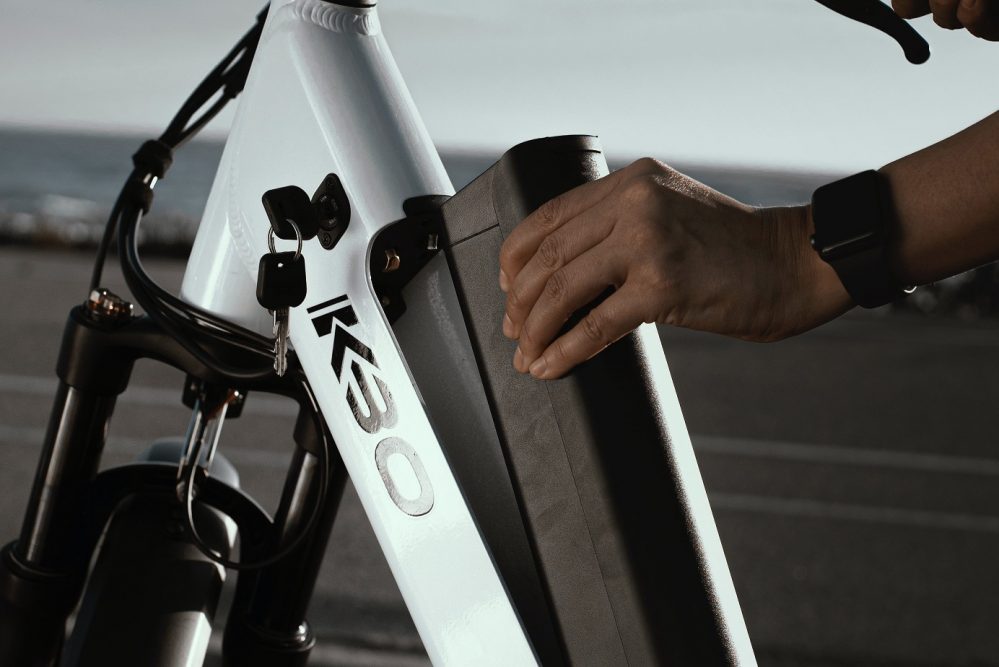Whether you are a seasoned bike rider or not, riding an electric bike, although it has the same benefits as riding a standard bike – it’s fun, healthy, and an effective way to commute – requires some additional preparation. If you just upgraded to an e-bike for a little extra “push”, read on to learn some technique tips on how to ride an e-bike that will make your experience more comfortable and safe.
What Is an E-Bike?
Electric bikes or e-bikes are bicycles with integrated electric motors to assist propulsion. The motor obtains its power from a rechargeable battery placed on the bike. As opposed to motorbikes, the motor of an e-bike generally assists you when pedaling rather than propelling you on its own. It is meant to increase human power instead of replacing it.
How Are Electric Bikes Powered?

Electric bikes have three particular components: the motor, the battery, and the controller. The motor obtains its energy from the battery and powers the drivetrain to provide the assistance required. With the controller, one can control the level of assistance desired.
One of the most common modes of operation of an e-bike is the one called pedal-assist. In this mode, you are required to pedal in order for the motor to work.
Electric Bike Riding Technique Tips
The similarities between electric and regular bikes are quite obvious. However, there are still some elements to consider before riding an e-bike. Starting slow, understanding your brakes, being careful around cars, or being mindful of your speed are all factors that play a role in learning the necessary techniques for smooth cycling.
Start slow
Although in general it sounds like very obvious advice when learning to use something new, it is not so much when we are referring to e-bikes. Electric bikes can reach high levels of speed with little effort and very quickly. This may lead to a loss of control of the bike. That’s why it is important to “start slow”.
If you are a beginner, you may want to start riding your e-bike on a flat and open surface without the pedal assistance. It is true that e-bikes are heavier, and you may not be able to get into motion without it, but if you can, go ahead and once you are moving and feel comfortable and stable, then activate the assistance.
If you cannot shift gears and start without the electric assistance, then activate it, making sure it is in the lowest setting.
Understand your brakes
It is important that you understand your brakes before you start using your e-bike. Even if you are an experienced bike rider, you may want to take the time to practice riding your new e-bike in a safe place so it becomes second nature.
Electric bikes are heavier and reach higher speeds than standard bikes, which means that it takes longer for them to come to a stop when braking; this time should be accounted for when riding. It’s just a question of physics!!!
Beyond the technicalities of whether your e-bike has mechanical disc brakes or hydraulic disc brakes, what matters is that you know which lever corresponds with the front wheel and which with the rear one. Keep in mind that for less aggressive stops, it may be enough to use the rear lever, but for a more aggressive brake, use both. Never use only the front. Using only the front brake may lead your rear wheel to lift and cause an accident.
Be careful around cars

This is a general rule of thumb: pay more attention and be more careful than usual when you’re around cars. Even if you are well familiar with your brakes, you should still pay attention to your surroundings to avoid any potential accidents.
Keep in mind that car drivers may misjudge the amount of time that it takes an e-bike to brake. Some of us who drive cars may not be used to e-bikes on the road and are not aware that they travel faster and need more time to brake. In fact, we may just think they are riding a standard bike. Caution on the part of an e-bike rider at this point is crucial to stay safe.
Make yourself seen
Perhaps the best way to avoid any potential accidents and feel as safe as possible on the road is to make yourself seen. Making sure all your lights are functioning properly is truly vital for e-bikes. Make sure the tail light is especially wired into the main battery because you want to be fully secure and know for a fact that the vehicles behind you can actually see you.
In addition to lights on your e-bike, you may want to consider wearing high-visibility clothing. There is a wide range of options in this regard: jackets, shoes, socks, etc. Making yourself visible could potentially save your life and offer a great cycling experience on your fresh e-bike.
Check your speed
A common beginner’s mistake is to crank up the assist setting. Of course, we are very curious to experience high speed and see what our new bike can do. However, this is not advisable. Make sure you get used to the e-bike and learn how it works before you take it to the max.
In addition, keep in mind that there are places where a speed limit has been set for electric bikes. So check your speed if you want to avoid fines!
What Makes E-Bike Riding Different?
Though it has been mentioned that some similarities between electric and regular bikes exist, such as the overall look and feel of cycling, there are also some key differences to consider.
The seated position
When riding an e-bike it is important to maintain a seated position, especially when you are using the electric assistance. Since the rotation power of the motor adjusts to the steady pedaling effort, when you stand up, your pedaling changes and confuses the motor, making it slow down.
Traction
If you like to do tricks with your bike, buying an e-bike may obviously not be the best choice. Although this does not apply to mountain e-biking, it will be important to always keep both wheels on the ground. Since one wheel gets the power from the motor and the other stabilizes the bike, if one of the wheels is not touching the ground, it will lose its balance.
Making turns

Although not that different from a regular bike, making a turn with an e-bike has some particularities. Since the motor is often placed closer to the ground, the center of gravity of the e-bike is lower. If you are turning at a high speed, stop pedaling when entering the curve, stand up slightly, and incline a bit into the turn. When you come out of the curve, go back to your initial position and start pedaling again. If you are turning at a low speed, there is no need to do that.
Speed limit
If you are a new e-bike user or are planning to buy one, you may want to check the regulations for their use wherever you come from to avoid breaking the law. You may also be wondering how fast an e-bike can go. Although generally electric bikes can reach 20mph on a flat surface, some can go up to 28mph. Of course, the speed when going downhill may be higher. Keep in mind that each level of electric assistance on an e-bike has its own pre-set speed limit.
Conclusion
Reading this article has probably confirmed your suspicion that riding an e-bike requires a bit more preparation than a regular bike. Although in principle not that different, you may want to take some time to become one with your electric bike and get used to it before getting into traffic. And remember, in addition to all the preparations you have to do when riding a regular bike, don’t forget to charge your battery!




